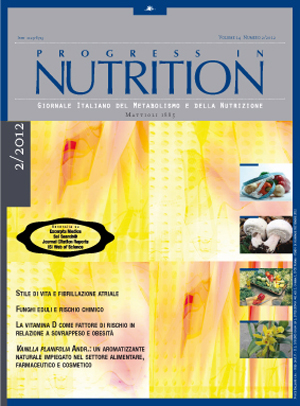Vanilla planifolia Andr.: un aromatizzante naturale impiegato nel settore alimentare, farmaceutico e cosmetico
Keywords:
Aromatizzanti, vaniglia, HPLC, GC, Vanilla planifolia, Flavours, vanillinAbstract
Vanilla planifolia Andrews o Vanilla fragrans è una liana erbacea della famiglia delle Orchidaceae originaria dell’America centrale. Il frutto dall’odore balsamico viene impropriamente chiamato baccello e dopo la raccolta viene sottoposto a fermentazione ed essiccazione ottenendo dei bastoncini bruni, flessibili, che si ricoprono di una patina bianca costituita da microcristalli di vanillina. L’origine geografica influenza le proprietà fisiche, le caratteristiche organolettiche e la composizione chimica dei frutti di vaniglia: i maggiori produttori sono il Madagascar, le isole Comore e Reunion, Indonesia, Messico, Indie Occidentali e Sud America. Lo scopo del lavoro è quello di trovare le migliori condizioni estrattive per le capsule di vaniglia impiegando come solventi di estrazione etere etilico, alcol metilico e diclorometano e sottoponendo a diverse tecniche di analisi gli estratti ottenuti per l’analisi quali-quantitativa delle sostanze estratte. I componenti principali che caratterizzano l’aroma della vaniglia sono: acido p-idrossibenzoico, p-idrossibenzaldeide, vanillina e acido vanillico. Le quantità relative di questi componenti principali rispetto alla vanillina nell’ estratto naturale è ben definito e, oltre ad essere un indice della buona qualità, permette di identificare la provenienza della pianta e scoprire le eventuali adulterazioni.Vanilla planifolia Andr.: a natural flavouring used in foodstuff, pharmaceuticals and cosmetics
Summary
Vanilla planifolia Andrews or Vanilla fragrans is a herbaceous liana of the Orchidaceae family and it is a plant native to Central America. The fruit, improperly called ”pod”, is characterized by a peculiar balsamic smell. After the collection fruits undergo fermentation and drying to obtain the tawny, flexible rods comes, that cover with a white vanillin microcrystals layer. Geographic origin influences the physical properties, the organolectic characteristics, and the chemical composition of Vanilla fruits. Major producers are the Madagascar, the Western Comore Islands, Reunion, Indonesia, Mexico, West Indies and South America. The scope of the present study is the analysis of ethyl ether, methyl alcohol and dichlorometane extracts of commercially available Vanilla caps using different analytical methods. The main compounds identified that characterize Vanilla aroma are p-idrossibenzoic acid, the p-idrossibenzaldeide, vanillin, and vanillic acid. The ratio of these main compounds compared to vanillin in natural extracts is well defined and can be useful as quality indicator. Moreover, it can help in locating the geographical origin of the plant and to identify possible extracts counterfeits.
Downloads
Published
Issue
Section
License
This is an Open Access article distributed under the terms of the Creative Commons Attribution License (https://creativecommons.org/licenses/by-nc/4.0) which permits unrestricted use, distribution, and reproduction in any medium, provided the original work is properly cited.
Transfer of Copyright and Permission to Reproduce Parts of Published Papers.
Authors retain the copyright for their published work. No formal permission will be required to reproduce parts (tables or illustrations) of published papers, provided the source is quoted appropriately and reproduction has no commercial intent. Reproductions with commercial intent will require written permission and payment of royalties.

This work is licensed under a Creative Commons Attribution-NonCommercial 4.0 International License.


